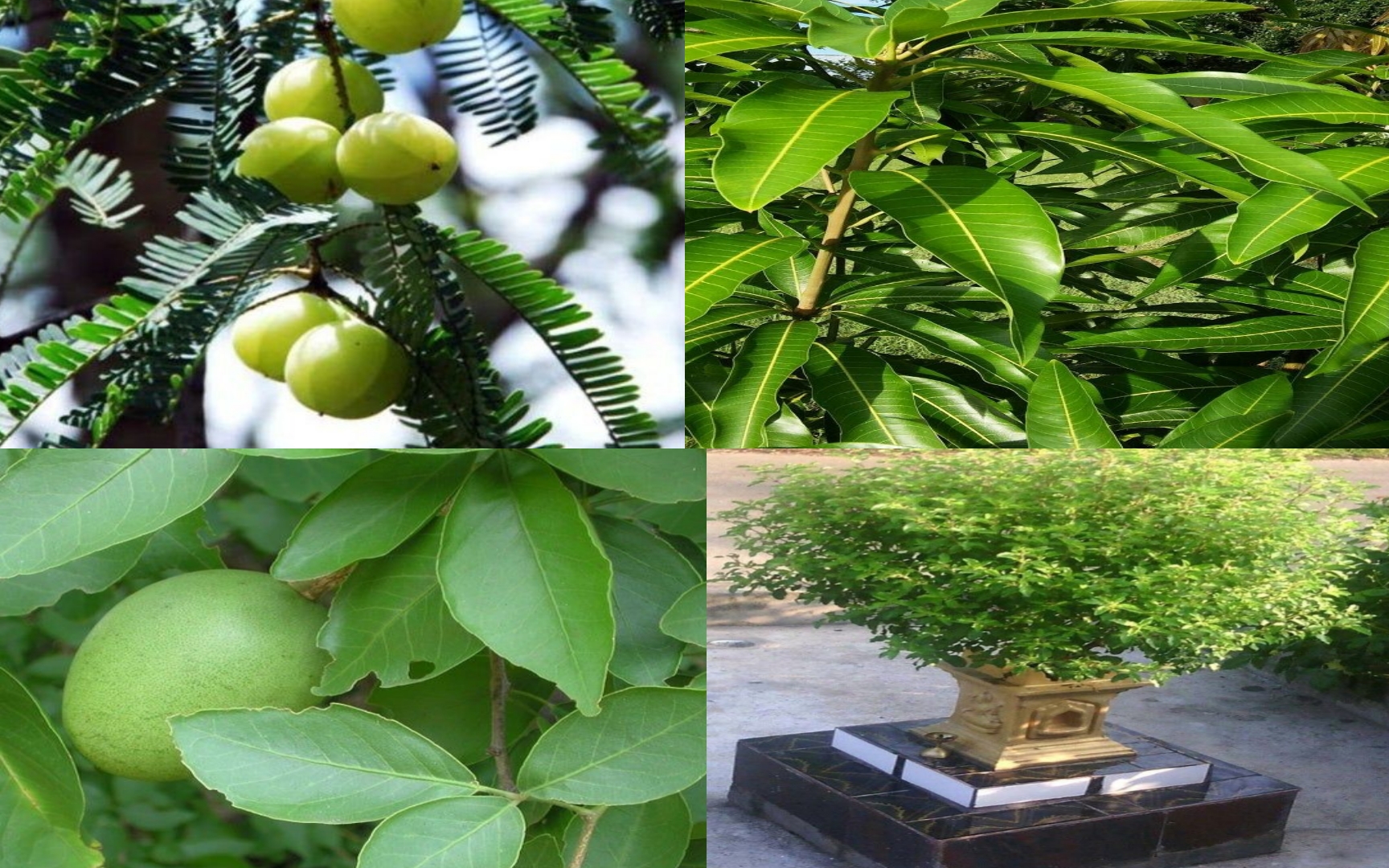
The Place of Petals and Leaves
Flowers have been a part of our society from times long past. They add the beauty of fragrance in all our lives. Flowers are used for all occasions. However, the floral offerings to God are considered to be sacred. Every house used to have its own share of flower-bearing plants, trees, and creepers. The people of the household would nourish and cherish them. Yes, some of the trees planted by grandmothers would be yielding for the grandchildren too. Most of the flowers from domestic flower gardens would be used for personal adornment and also for pooja purposes. Some flowers would be left in the tree or plants so that bees could collect the honey from them.
Temples had their flower gardens, and they were known as Nandavanaṁ-s (anglicized). Land was allotted for these flower gardens and caretakers were appointed. The permanent caretakers were given endowments which consisted of lands. They used the income from the lands for their subsistence and in return supplied flowers to the temples. The story of Thoṇḍaradipodi Āzhvār and Devadevi relates to a flower garden. Periāzhvār was known to offer garlands to Vaṭapatrasāyī of Srivilliputhur and the story of how his foster daughter Āṇdāl married Ranganātha is part of history.
The temple Nandavanaṁ-s were sacred places, and one would enter the space only after having a bath. A flower garden is created based on the needs of the temple. It depends on the principal deity and other shrines present within. Tulasi plants are required for a Viṣṇu temple, while Vilvam trees for a Śivā temple garden. Lord Viṣṇu, Lakṣmī, Pārvatī, Sarasvatī, and Kārtikeya need a lot of flowers for Alaṅkāraṁ (an act of adorning). It is said that Lord Ganeśa is fond of Arugampul (Scutch grass) and Erukampoo (Crown flower). So, one may find the deity usually adorned with both the grass and the flower on all auspicious days. Some temples have ponds for bringing up lotus and lilies for the deities.

Let us now look into the kind of plants/trees which will form part of a temple Nandavanaṁ (flower garden). Tulasi and Vilvam are spotted in the shrines of Lord Śivā & Goddess Lakṣmī, the Goddess of fortune). Gooseberry trees, mango trees are planted for the leaves required for pooja. Plantain is planted for its leaves and fruit. Arali (Oleander), Nandiarvattai (Crepe Jasmine), Malli (Jasmine), Ramabanam (River Jasmine) are also planted alongside. A Peepal tree, an Arecanut tree, a couple of Coconut trees, Sampangi (Champak), Sembaruthi (Shoe flower), Pavizhamalli (Night-flowering Jasmine), Mandaarai (Dwarf White Bauhinia) and Thecchipoo (Ixora flower) will also find a place.
The land has to be cleared, ploughed with the aid of native bulls, seeds and saplings will have to be collected, a well has to be dug in the spot, and the planting will begin on an auspicious day. The temple management, devotees and volunteers would participate enthusiastically. Poojas will be done, and the planting will be accompanied with songs connected with the deities. The respective Sahasranamam or Stuthi would be recited.
Devotees would usually offer to work in the temple garden. These volunteer devotees would take turns to look after the garden. Plucking of flowers was an important task. They would use the fingers and not the nails to pluck the flowers. The devotees would abstain from smelling the fragrance of the flowers. Such flowers would not be used. In fact, there is famous story connected with Saint Vyāsarājā plucking flowers. He had been Śaṅkukarṇa in his previous birth and was assigned the job of plucking flowers on Earth and bring it to Brahma in Satyaloka. These flowers were used for Nārāyaṇa Pūjā by Brahmā. The story tells us about the importance of flower gardens in our planet. Flowers from our space were important for the heavenly beings too.
Devotees would pluck the flowers with the name of God on their lips. Another set of people would wash the flowers and make garlands or strands. Some volunteers made crowns, parrots and ornaments with the flowers and leaves from the temple garden. The Srivilliputtur Āṇdāl temple is famous for the parrot. The Craft Council of Tamil Nadu (Headquartered in Coimbatore) has documented the work of traditional florists in the book 'Pushpanjali'.
Floral offerings were looked into with great devotion. Several are the stories of Nandavanaṁ-s and devotees who nurtured such flower gardens. The story of the flower garden in Tirumala is quite interesting.
One day Saint Rāmānuja asked if anyone would volunteer to go to the Seven Hills (Tirumalā) and render floral service to Lord Veṅkaṭramaṇā. None were prepared to leave Rāmānuja for the students cherished his company. Silence prevailed at that moment. Suddenly Rāmānuja noticed one person getting up and stating solemnly, " I shall do it ". Rāmānuja was mightily pleased. The name of the daring disciple was Anantan and proceeded to Tirumalā after receiving the blessings of Rāmānuja. He created a nice floral garden and named it after ‘Rāmānuja.’ The sprawling lake from where he used to draw water for the plants was also named ‘Rāmānuja’.
The floral garden was getting set up well and Anantāzhvār was gathering fresh soil for the plants. His pregnant wife was helping him by taking the mud to the plants. The work was cumbersome for the two of them. Lord Bālājī took the form of a small boy and tried to help the lady. Anantāzhvār forbade his wife from enlisting the support of the boy who was none other than the Lord of the Seven Hills. He considered it to be a dilution of his dedicated service and therefore he called the boy ‘Kaiñkārya Vighna Kārī’ (Service Disruptor). Anantāzhvār chased the boy away. However, the boy managed to help the pregnant wife of Anantāzhvār. The angry Anantāzhvār hit the boy with the crowbar. The boy ran away into the temple and disappeared.
Anantāzhvār went into the temple and discovered that the Lord was bleeding from the chin. He at once understood that it was Lord Veṅkateśvarā who had helped his wife and he regretted for having been rash. Anantāzhvār applied raw camphor for the wound and lo it stopped bleeding instantly. Lord Veṅkatācalapatī was impressed by the devotion of Anantāzhvār and he not only forgave him but also told him that he would display the raw camphor mark forever. Thus, the raw camphor known as 'Pacchai Karpūraṃ' in Tamil is applied to the Lord Bālājī even to this day. The crowbar that was used by Anantāzhvār can be still seen on the right side at the entrance to the temple.
On another occasion Anantāzhvār was bitten by a snake and was advised to seek treatment. Fortunately, the grace of Lord Veṅkatācalapatī, Anantāzhvār recovered. He continued to look after the flower garden and one day a gentleman questioned him thus, "How did you bear the poison of a snake?" To which Anantāzhvār gave a stunning reply, "If the snake's bite had been unbearable, I would take a dip in the sacred waters named after Rāmānujācaryā and got myself cured. Had I succumbed to the poison, I would take a dip in the heavenly in Virajā (River in the abode of Lord Nārāyaṇa). Thus, the dedication of the service of Anantāzhvār to Lord Nārāyaṇa through the Nandavanaṁ (floral garden) is unique.
All the major temples have their own Nandavanaṁ-s. Some of them have disappeared over time and enthusiasts like Vinod Bhattar of Tiruvellarai are working hard to reestablish them. According to Vinod Bhattar of Tiruvellarai, a Divya Desaṁ as per Rāmānuja Saṁpradāyaṃ is in the process of establishing a Nandavanaṁ for Pañkajavalli Sameta Puṇdarīkākṣa Perumāl. Land is now ready, and work is going on. Vinod Bhattar is ensuring that the same plants and trees found in the Madhurakavi Nandavanaṁ which is the source of flower garlands for Lord Rañganātha at Śrī Rañgaṁ are nurtured at the Nandavanaṁ in Tiruvellarai.
The revival of Dharma is taking place at a rapid pace in India. It is earnestly hoped several Nandavanaṁ-s nurtured by organic manure will come in order to serve the temples of the land.
NEXT ARTICLE